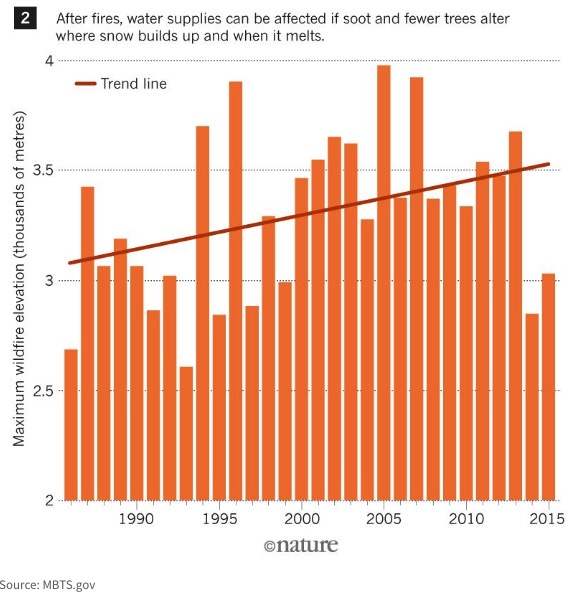
In the natural world one environmental event or disturbance can initiate or be part of a series of cascading events that intensify the impacts of natural hazards, possibly turning them into disasters.
An article at The Conversation explores how these effects can be enhanced by a warming climate. Below is an excerpt from an article written by Amir AghaKouchak (UC Irvine) and Farshid Vahedifard (Mississippi State University).
“Multiple hazardous events are considered cascading when they act as a series of toppling dominoes, such as flooding and landslides that occur after rain over wildfires. Cascading events may begin in small areas but can intensify and spread to influence larger areas.
[…]
“Also, the severity of these cascading weather events worsens in a warming world. Drought-stricken areas become more vulnerable to wildfires. And snow and ice are melting earlier, altering the timing of runoff. This has a direct relationship with the fact that the fire season across the globe has extended by 20 percent since the 1980s. Earlier snowmelt increases the chance of low flows in the dry season and can make forests and vegetation more vulnerable to fires.
“These links spread further as wildfires occur at elevations never imagined before. As fires destroy the forest canopy on high mountain ranges, the way snow accumulates is altered. Snow melts faster because soot deposited on the snow absorbs heat. Similarly, as drought dust is released, snow melts at a higher rate, as has been seen in the Upper Colorado River Basin.
[…]
“When landscapes are charred during wildfires, they become more vulnerable to landslides and flooding. In January, a debris flow event in Montecito, California killed 21 people and injured more than 160. Just one month before the landslide, the soil on the town’s steep slopes were destabilized in [the Thomas Fire]. After a storm brought torrential downpours, a 5-meter high wave of mud, tree branches and boulders swept down the slopes and into people’s homes.”
